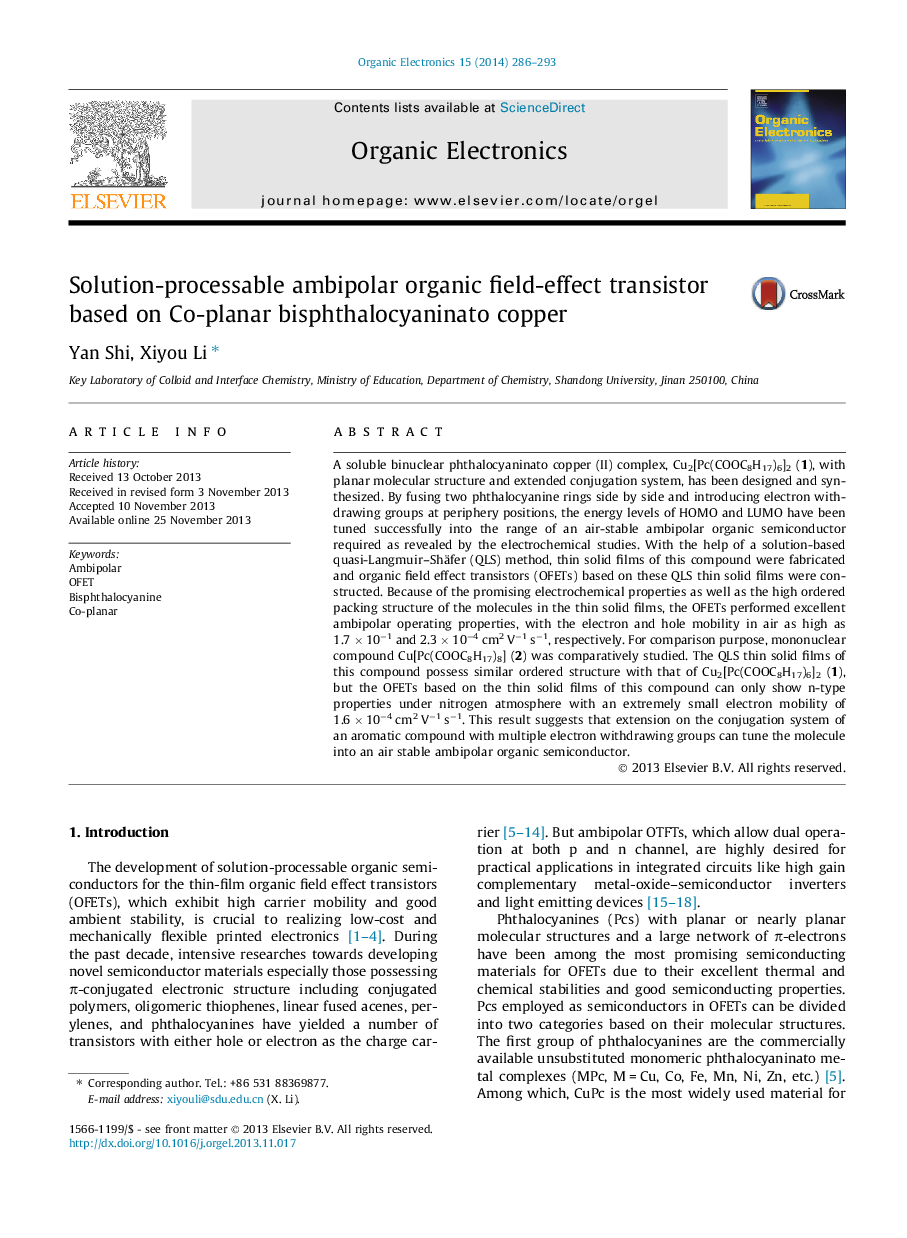| Article ID | Journal | Published Year | Pages | File Type |
|---|---|---|---|---|
| 1263883 | Organic Electronics | 2014 | 8 Pages |
•A kind of new ambipolar organic semiconductor for high performance OTFTs is developed.•Extending on π-conjugation network tuned the HOMO and LUMO energy levels efficiently.•Thin solid films of this new material can be fabricated by solution-processed method.•Air-stable electron and hole mobilities of 1.7 × 10−1 and 2.3 × 10−4 cm2 V−1 s−1 were achieved.
A soluble binuclear phthalocyaninato copper (II) complex, Cu2[Pc(COOC8H17)6]2 (1), with planar molecular structure and extended conjugation system, has been designed and synthesized. By fusing two phthalocyanine rings side by side and introducing electron withdrawing groups at periphery positions, the energy levels of HOMO and LUMO have been tuned successfully into the range of an air-stable ambipolar organic semiconductor required as revealed by the electrochemical studies. With the help of a solution-based quasi-Langmuir–Shäfer (QLS) method, thin solid films of this compound were fabricated and organic field effect transistors (OFETs) based on these QLS thin solid films were constructed. Because of the promising electrochemical properties as well as the high ordered packing structure of the molecules in the thin solid films, the OFETs performed excellent ambipolar operating properties, with the electron and hole mobility in air as high as 1.7 × 10−1 and 2.3 × 10−4 cm2 V−1 s−1, respectively. For comparison purpose, mononuclear compound Cu[Pc(COOC8H17)8] (2) was comparatively studied. The QLS thin solid films of this compound possess similar ordered structure with that of Cu2[Pc(COOC8H17)6]2 (1), but the OFETs based on the thin solid films of this compound can only show n-type properties under nitrogen atmosphere with an extremely small electron mobility of 1.6 × 10−4 cm2 V−1 s−1. This result suggests that extension on the conjugation system of an aromatic compound with multiple electron withdrawing groups can tune the molecule into an air stable ambipolar organic semiconductor.
Graphical abstractFigure optionsDownload full-size imageDownload as PowerPoint slide
